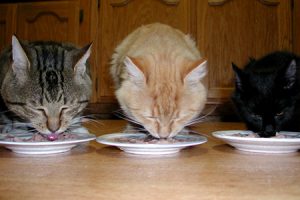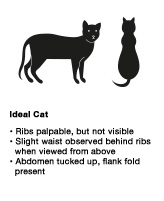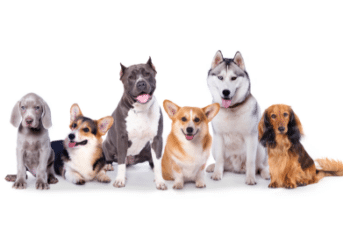Feeding Your Cat for Optimal Health
Feeding Your Cat for Optimal Health
 June is the ASPCA’s Adopt a Shelter Cat Month and I am hoping many families will be welcoming a new furry feline into their home this month. To help new cat owners learn about the needs of cats, this month’s blogs are dedicated to feline topics – this week to nutrition.
June is the ASPCA’s Adopt a Shelter Cat Month and I am hoping many families will be welcoming a new furry feline into their home this month. To help new cat owners learn about the needs of cats, this month’s blogs are dedicated to feline topics – this week to nutrition.
Use a Reliable Source of Information About Feline Nutrition
Your veterinarian’s website, the website of a college of veterinary medicine, or an organization like the World Small Animal Veterinary Association’s (WSAVA) Global Nutrition Committee are excellent sources of information about feline nutrition. The WSAVA has a feline specific set of guidelines for internet based nutritional information, or the American Academy of Veterinary Nutrition’s resource page.
Feed to Maintain an Ideal Body Condition
 Veterinarians discuss ideal body condition rather than a specific ideal weight since some slinky Siamese cats should weigh five pounds and a beefy Maine Coon cat, 15 pounds. The image on the right shows a cat with an ideal body condition. Notice you can see a waistline when looking at your cat from the top and a can feel the ribs if you put your hands on the cat. The loss of a waistline means your cat should lose weight and visualization of the ribs suggests more food is in order.
Veterinarians discuss ideal body condition rather than a specific ideal weight since some slinky Siamese cats should weigh five pounds and a beefy Maine Coon cat, 15 pounds. The image on the right shows a cat with an ideal body condition. Notice you can see a waistline when looking at your cat from the top and a can feel the ribs if you put your hands on the cat. The loss of a waistline means your cat should lose weight and visualization of the ribs suggests more food is in order.
Feed a Complete and Balanced Diet
A “complete and balanced” diet will say exactly that on the pet food label. The label also indicates the life stage for which the food is appropriate: kitten, puppy, adult, senior. Obviously you should choose the appropriate one for your pet. Some pet foods and treats are not complete and balanced and the label will indicate these foods are “intended for intermittent or supplemental feeding only.” Occasionally, treats are formulated to be “complete and balanced” and that will be indicated on the label, as well. Veterinarians define supplemental feeding as less than 10% of the daily calorie requirement.
Think Twice About Feeding Raw Food
Being totally honest, I am nervous about the safety of raw food diets, specifically raw animal protein sources. Raw fruits, vegetables and vegetable protein sources are usually safe when eaten raw. We cook protein, specifically meat, to protect against certain food borne illnesses, like Salmonella, Campylobacter and Toxoplasma. Raw food must be handled carefully, since it poses a significant health risk to both pets and humans, especially children and immunocompromised individuals. After handling raw food diets, hands and food preparation surfaces and cat bowls must be washed with hot soapy water or in the dishwasher to avoid spreading any infectious agents. Raw diets may not be appropriate in homes with small children and immunocompromised individuals. Here is more on protecting your pets against foodborne illness.
Feed Carbs…Or Not
I am bringing this up because it is currently an area of great controversy in feline nutrition. There are proponents of zero carbs and proponents of carbs for cats. The former argue cats are strict carnivores and the latter provide data indicating cats can utilize the nutrients provided by grains and starches. Some veterinary research indicates treatment of feline diabetes requires a high fiber (high carbohydrate diet) and others a high protein diet. Since the currently available data is conflicting, I suggest cat owners rely on the expert advice of their veterinarian for recommendations on the optimal food for your individual cat, including dietary carbohydrate content.

































